Bishakh Som is an Indian-American trans femme visual artist and author. Her work has appeared in The New Yorker, MoMA.org, Autostraddle, The Strumpet, The Boston Review, The Georgia Review, Black Warrior Review and The Brooklyn Rail, amongst other publications. Her graphic novel Apsara Engine (The Feminist Press) is the winner of a 2020 L.A. Times Book Prize for Best Graphic Novel and a 2021 Lambda Literary Award winner for Best LGBTQ Comics. Her graphic memoir Spellbound (Street Noise Books) was also a 2021 Lambda Literary Award finalist.
Bishakh has illustrated two books about architecture: The Prefab Bathroom: An Architectural History, (McFarland Press) and Cocktails and Conversations: Dialogues on Architectural Design (AIA New York).
Bishakh’s artwork was featured in solo shows at ArtLexis Gallery and at Jaya Yoga Center and in group shows at The Society of Illustrators in New York, the Bannister Gallery at Rhode Island College, Issyra Gallery, the Grady Alexis Gallery, De Cacaofabriek in the Netherlands and most recently at Art Omi in Ghent, NY.
I had the opportunity to interview Bishakh, which you can read below.
First of all, welcome to Geeks OUT! Could you tell us a little about yourself?
I’m a Gen X trans femme Bengali-American comics Aunty. I used to be an architect until it made emotional scrambled eggs out of me, and I decided to gamble on taking a couple of years off to work on a graphic novel, which eventually became Apsara Engine. So thanks, Architecture, for kicking my ass. I live in Brooklyn with my wife (who is also my best friend from university) and a tuxedo cat. I still make lunch out of vegetable scraps: kale stems, cauliflower leaves. I love Marmite and Natto and fried Bitter Gourd.
As a creative, what drew you to the art of storytelling, particularly comics/graphic novels?
I’ve been drawing comics since the third grade, when, with three other friends, we created a series of bizarre characters and one-page, 12-panel comics which we drew on legal size newsprint. All of this happened organically – I think comics are a natural language, not just for children – and I just kept at it long after my pals had moved on. I think there is a socio-cultural imperative to outgrow the language of comics, which seems ridiculous to me – as if the process of combining text and image must inherently imply a specific genre or rank within culture and art. As if telling stories with images, as you do in comics, is not as rich an artistic project as that of the ‘fine’ arts. (For doubters, I point you to:the scrolls depicting The Tale of Genji, The Bayeux Tapestries, Persepolis, Max Ernst’s collage-comics.) Anyway, I loved drawing and I loved creating characters and giving them inner lives and I guess I just never gave it up.
In regards to your graphic novels Apsara Engine and Spellbound, there’s an interesting blend of non-fiction/memoir reflection and speculative fiction. Was this type of narrative structure a natural inclination, or intentional blurring of genres?
Spellbound was a very specific project, one that I started while I was waiting for publishers to respond to the first iteration of Apsara Engine. I thought I’d try doing a diary comic just because that genre seemed to be enjoying a sort of renaissance at the time and because I thought I could do it better than the ones I’d been reading. I never thought it would turn into a book, but was thrilled when Liz at Street Noise Books wanted to do that very thing. But memoir isn’t a genre that I’m naturally drawn to and I don’t think I’ll be returning to it, at least not as a long-form project. I’m much more comfortable writing and drawing fiction, which often tilts into speculative fiction, as you say. So I don’t see my body of work as a blurring of genres as such, since the two books are very different projects.
Growing up, were there any stories in which you felt touched by/ or reflected in? Are there any like that now?
As a child, when we’d go back to India from New York every two years, my parents would buy me Indian comics from streetside vendors to entertain me. I loved these comics, which focused on themes of Indian mythology, culture and history – though now I recognize how problematic they were in terms of problematic attitudes of caste, colorism and nationalism. But I always related to the stories that centered around women and related the ways in which they were powerful (like the Rani of Jhansi comic, about a 19th century freedom fighter) and divine (like the many comics about goddesses – Durga, Kali, Saraswati – who were part of our household cultural life.) I recognize the volatile nature of bringing up figures like these who are immersed in Hindu culture, given the toxic religious nationalism that has plagued India in the Modi years, but I cannot divorce myself from these strong femme-figures who I feel have, in a way, birthed me.
How would you describe your general creative process?
It’s feast or famine – sometimes flowing, sometimes haphazard. Though lately I feel like I’m more in control of the process and can reduce the time I spend fretting or drawing a blank. I have ideas that I sit on for years, waiting for the right time to bring them to fruition. Or I am forced into a corner with a project or commission with a very limited timeframe, which forces me to generate ideas more quickly than I am comfortable with. For projects like that, I might be inspired by a song lyric, a visual moment from a film, or even, as was the case for a comic I did for the Belladonna ‘Lesbian All-Stars’ series, a poem that I wrote as an oblivious but questing 17 year old.
As a creative, who or what would you say are some of your greatest artistic and creative influences and/or sources of inspiration in general?
Even though I’ve abandoned architecture, I still hold a little grotto in my heart for architectural sensibilities, for deliberate and cautious attitudes towards design. And so I love many aspects of European graphic design, for South Asian calligraphy and aesthetics, for the beauty of maps, interiors, landscapes, the beauty of a label on a jam jar, the colors and snugness of a subway train in Glasgow. And these are sometimes sensibilities that I love to import into my comics.
What are some of your favorite elements of writing/illustrating? What do you consider some of the most frustrating and/or challenging?
I found it very difficult to write the script for my next book, mainly because I’m not used to sitting down at a desk for hours on end at a laptop, tapping out pages of words with no recourse to drawing, where I think my ‘natural’ talents lie. I love writing and drawing simultaneously though, and of immersing myself in projects that allow me to flit between the two in a more organic way. Sometimes I find the zen-like flow of inking to be soothing and sometimes it’s the opposite, when my hand starts to cramp up. I’ll be painting my next book in full color, with watercolors, which I haven’t done before for a 250-page book, so that’s a little intimidating. But right now, I’m pencilling the book, which has so far been a really lovely process.

Aside from your work, what are some things you would want others to know about you?
Music has always been my second love. I played guitar and bass and was in a couple of very short-lived bands in my youth. But to this day, I try to keep up with new music and take solace in the music that fed my early days – Kate Bush, My Bloody Valentine, Cocteau Twins, Bauhaus. I love going to gigs, even though people seem more interested in their phones than in the show these days (yes, I’m an old grumpy lady!) Music and subculture have always been very important to me and inevitably seep into my comics and art work.
What’s a question you haven’t been asked yet but that you wish you were asked (as well as the answer to that question)?
Describe some of your most treasured memories.
- – Sitting with my then-best friend and now wife in her dorm room, drinking Carlo Rossi, smoking clove cigarettes, the afternoon sun filtering through the curtains, listening to Joy Division.
- – Tootling around on a go-kart with my big brother at an amusement park when I was an infant in Addis Ababa, Ethiopia. The sound of the coins slipping through the coin slot to start the go-kart.
- – Being surrounded by my cousins and aunts in Kolkata. The close physical contact between us, the flowery scent of them, mingling with heat and the fragrance of coconut oil in their hair. My aunt telling me I looked just like my mom. Feeling like a girl for the first time, and being loved.
- – A cold snowy night in England. Meeting a friend at a Cambridge pub and drinking Scrumpy, an English cider that tasted of twigs and earth.
What advice might you have to give for other aspiring creatives/ graphic novelists?
Find your writing and drawing family early on and be active in creating a community. It’s hard to sit at your drawing table and either come up with ideas or to process those ideas on your own. I was in several small comics writing groups early on in my comics life and just having people to show your latest pages to, and to have their feedback, was invaluable both for the sake of the comics themselves but also as for me as a social and emotional being. Having a little gang to go to shows/cons with was great, even if the shows themselves sometimes weren’t, but getting to see what everyone outside your local comics scene was doing was a source of great inspiration.
Are there any other projects you are working on and at liberty to speak about?
I’m working on my third book, which will be published by Surely, Mariko Tamaki’s LGBTQ+ imprint at Abrams, some time in 2028 or so. It’s going to be a graphic novel masquerading as a travel guide to an imaginary city-state, the citizens of which are exclusively trans.
Finally, what LGBTQ+ books/comics/authors would you recommend to the readers of Geeks OUT
I love Solomon Brager’s new graphic novel, Heavyweight, which zooms in and out of time and space and deals with issues of identity, memory and history. Also it’s beautifully drawn and painted. Sol’s partner Charles Theonia has a lovely new collection of poetry out called Gay Heaven Is a Dance Floor but I Can’t Relax. My dear friend Cat Fitzpatrick’s novel in verse, The Call-Out, is a Lambda Lit award winner and a hilarious investigation of trans life in NYC. (Also I painted the cover image!) Jeanne Thornton’s novel Summer Fun is lovingly written and choreographed and is also a Lammy winner. Plus she’s working on a graphic novel which obviously, I can’t wait to read.

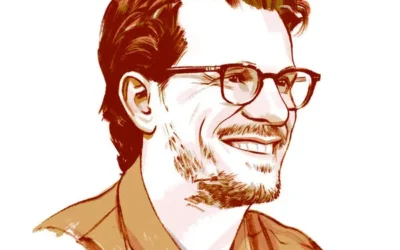
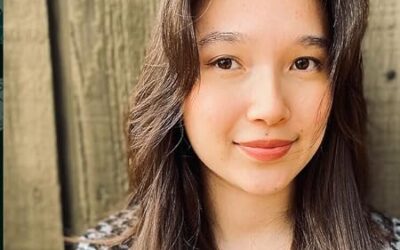
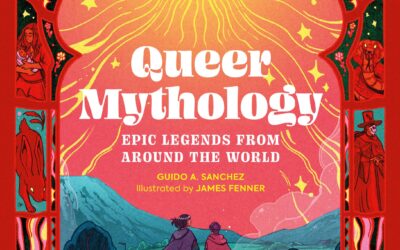
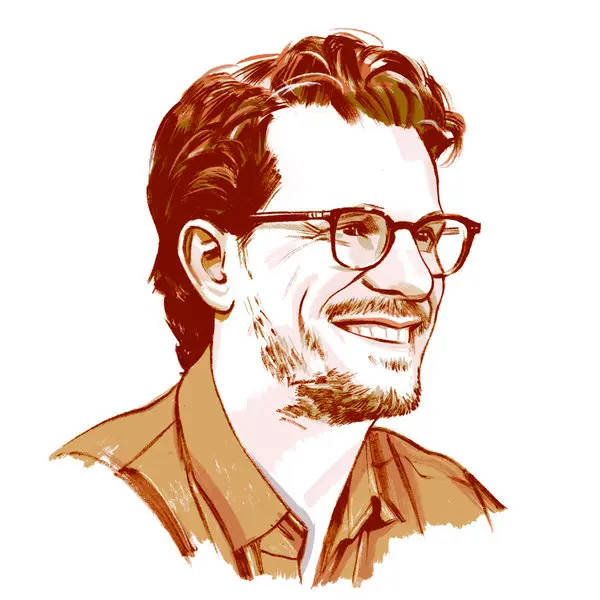
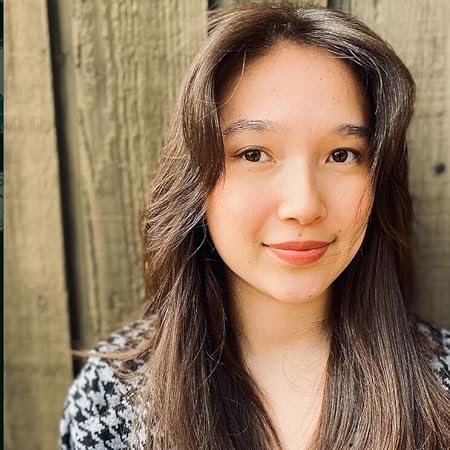
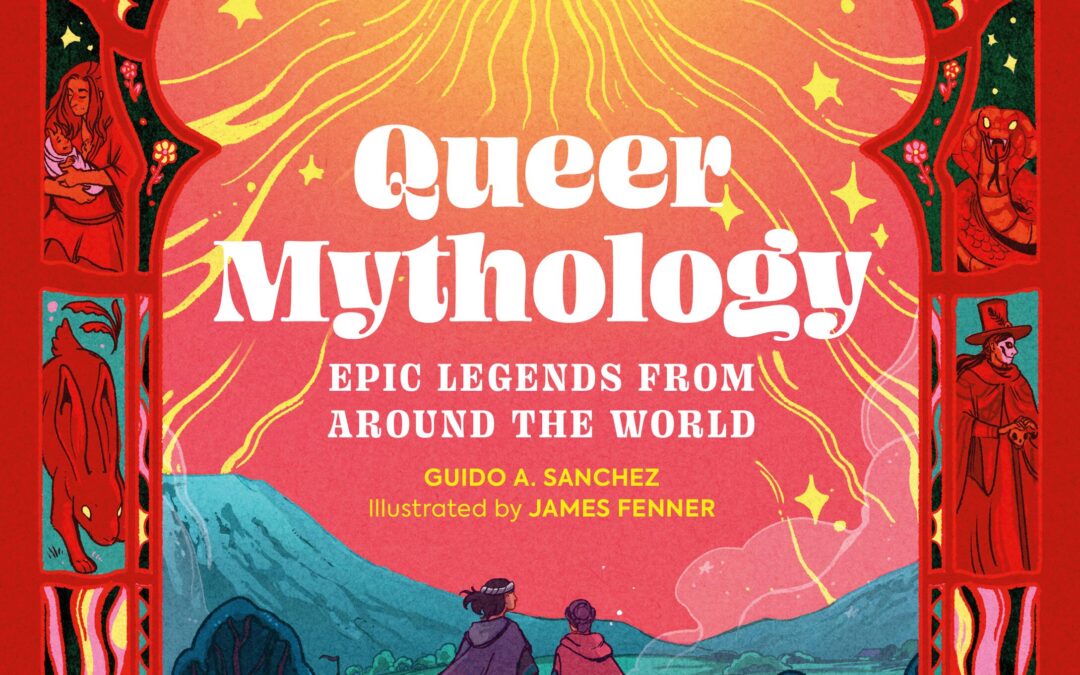
0 Comments